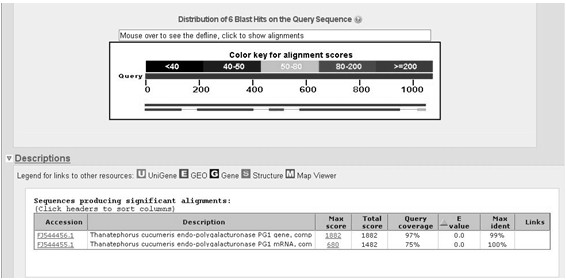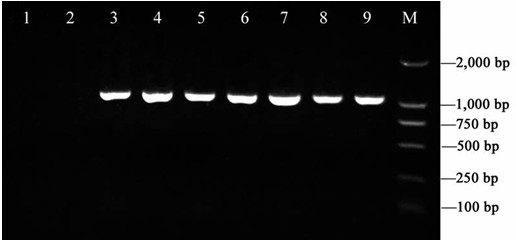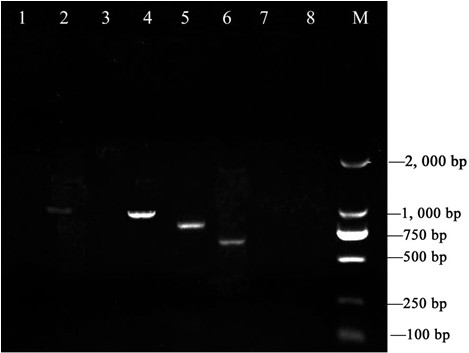Primers for amplifying Rrspgl, core fragment of gene and application of core fragment
A technology of core fragments and specific primers, which is applied in the field of genetic engineering and can solve problems such as not being retrieved
- Summary
- Abstract
- Description
- Claims
- Application Information
AI Technical Summary
Problems solved by technology
Method used
Image
Examples
Embodiment 1
[0030] Example 1 Rrspg1 Gene acquisition
[0031] 1. Primer Design
[0032] According to the PG gene sequence (GenBank registration number: JN118556) published on the NCBI website (www.ncbi.nlm.nih.gov), use DNAMAN software for sequence alignment to find homologous sequences, and then use Primer5.0 according to the homologous sequences The software designed 24 pairs of primers.
[0033] Rrspg1 Gene Amplification Primer Screening
[0034] Using the total DNA of rice sheath blight strong pathogenic strain GD-118 as a template, the 24 pairs of primers designed above were used for PCR amplification and sequenced. The sequencing results are compared on the NCBI website, and it is judged whether the measured sequence is the required target fragment according to the homology with the corresponding enzyme gene fragment, and then the quality of the primer is judged. Poor primers were discarded. For primers with good sequencing results, further sequencing is performed af...
Embodiment 2
[0042] Example 2 rice sheath blight endo-PG gene 1 ( Rrspg1 ) Functional analysis of core fragments
[0043] 1. Construction of RNAi vector
[0044] Amplified with primers PGS10F (nucleotide sequence shown in SEQ ID NO: 3) and PGS10R (nucleotide sequence shown in SEQ ID NO: 4) Rrspg1 The core fragment PGS was obtained to obtain its sequence (the nucleotide sequence is shown in SEQ ID NO: 5). The sequences of primers PGS10F and PGS10R are as follows:
[0045] PGS10F (SEQ ID NO: 3): ATGGCTTTGATGTTTCC;
[0046] PGS10R (SEQ ID NO: 4): ACTGCGATGTTGTTGGT.
[0047] Use separately Hin dⅢ and xho Ⅰ and Kpn I and Bgl Ⅱ Two groups of restriction endonucleases are used for double digestion, and then the target fragment is Rrspg1 Part of the core fragment PGS (SEQ ID NO: 5) and the vector pSilent-1 were constructed for forward and reverse ligation reactions to obtain a new recombinant vector.
[0048] The specific operation steps are: the pSilent-1 vector ( Figure 4 -a)...
PUM
 Login to View More
Login to View More Abstract
Description
Claims
Application Information
 Login to View More
Login to View More - R&D
- Intellectual Property
- Life Sciences
- Materials
- Tech Scout
- Unparalleled Data Quality
- Higher Quality Content
- 60% Fewer Hallucinations
Browse by: Latest US Patents, China's latest patents, Technical Efficacy Thesaurus, Application Domain, Technology Topic, Popular Technical Reports.
© 2025 PatSnap. All rights reserved.Legal|Privacy policy|Modern Slavery Act Transparency Statement|Sitemap|About US| Contact US: help@patsnap.com



